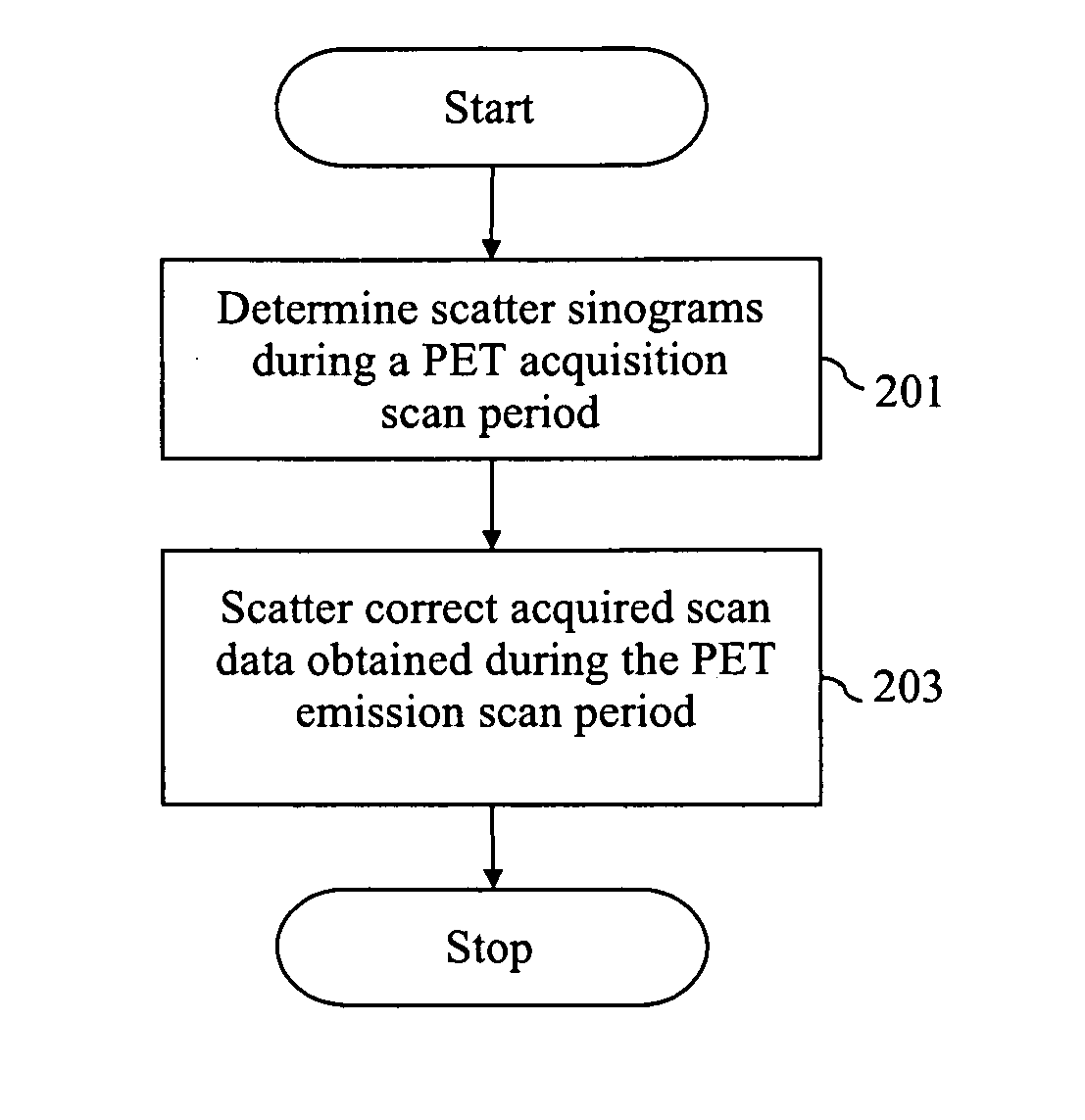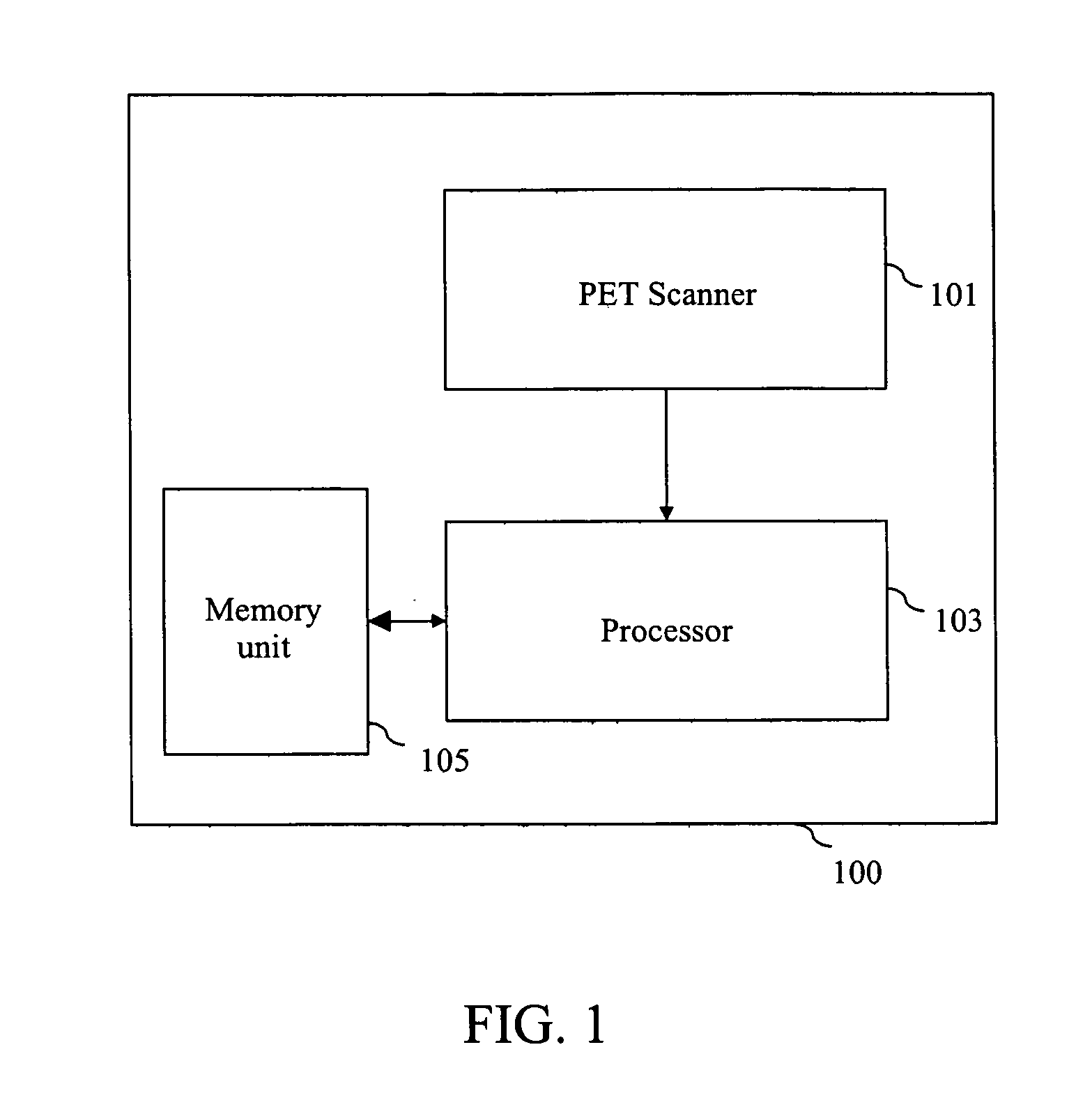Method and system for scatter correction in a positron emission tomography system
a positron emission tomography and scatter correction technology, applied in the field of positron emission tomography (pet) systems, can solve the problems of insufficient robustness of function-fitting methods, method not always performing satisfactorily for 3d pet acquisition, and bias estimation of activity distribution in patients
- Summary
- Abstract
- Description
- Claims
- Application Information
AI Technical Summary
Problems solved by technology
Method used
Image
Examples
Embodiment Construction
[0015] Various embodiments of the invention provide a method and system for reconstructing a PET image of a scanned object by computing a look-up table of scattered coincidence information as a function of spatial position in the object during the time period required for PET acquisition. This allows for correcting for scatter almost immediately, if not immediately, after the PET acquisition is completed. The computation of scatter look-up tables using, for example, modeling of the physics of scatter is performed during the PET acquisition scan period. The computed scatter look-up table enables a fast reconstruction of a PET image either by correcting the measured PET scan data for scatter prior to reconstruction or by using the scatter look-up table in an iterative image reconstruction loop and as described in more detail herein.
[0016]FIG. 1 is a block diagram showing a PET system 100 in accordance with an exemplary embodiment of the invention. In this embodiment, PET system 100 i...
PUM
 Login to View More
Login to View More Abstract
Description
Claims
Application Information
 Login to View More
Login to View More - R&D
- Intellectual Property
- Life Sciences
- Materials
- Tech Scout
- Unparalleled Data Quality
- Higher Quality Content
- 60% Fewer Hallucinations
Browse by: Latest US Patents, China's latest patents, Technical Efficacy Thesaurus, Application Domain, Technology Topic, Popular Technical Reports.
© 2025 PatSnap. All rights reserved.Legal|Privacy policy|Modern Slavery Act Transparency Statement|Sitemap|About US| Contact US: help@patsnap.com



